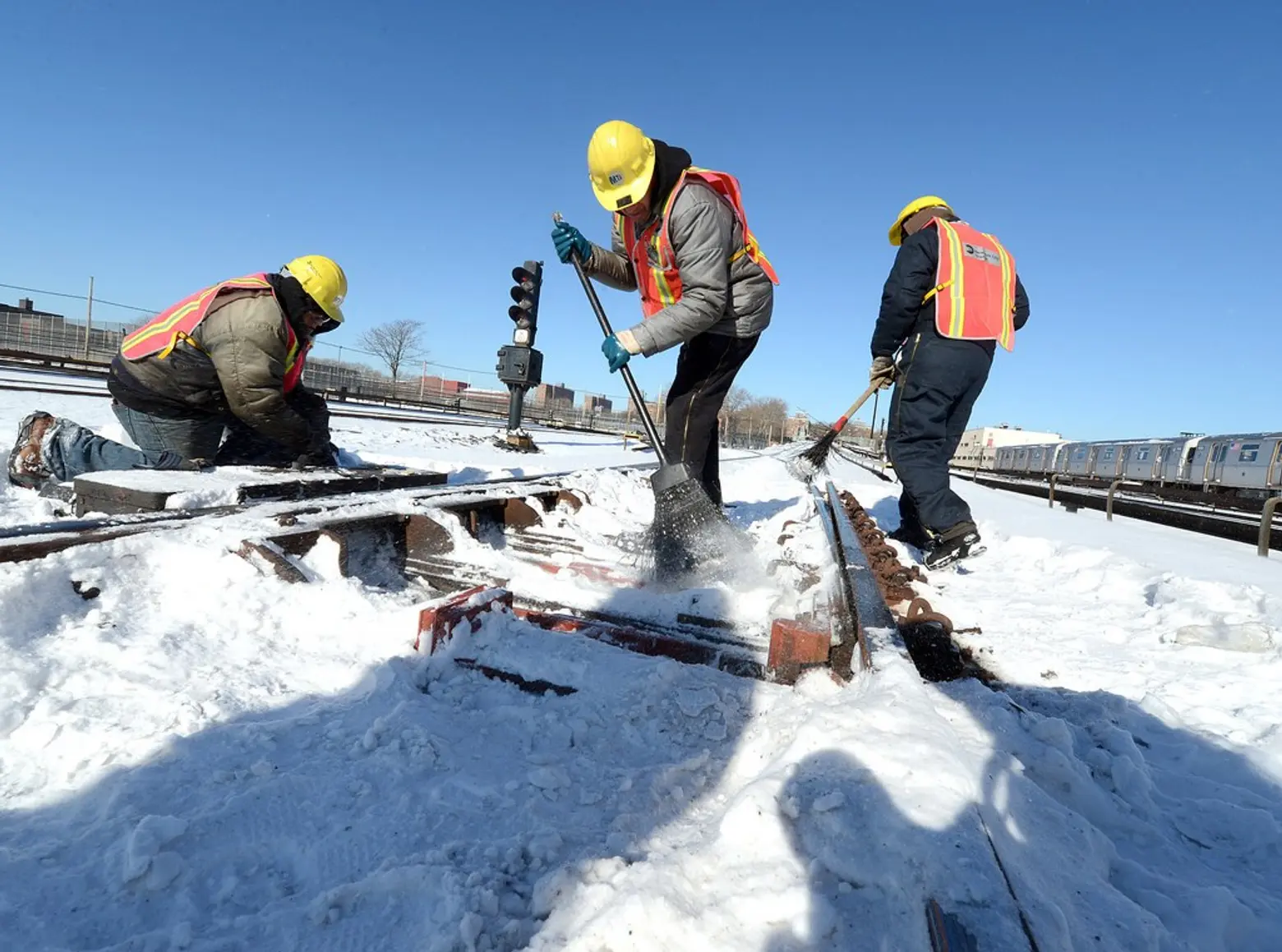How does the MTA deal with snowstorms? Jet engine powered snow blowers

A jet snow thrower in action via MTA’s Flickr
With a forecast of up to 18 inches of snow, Winter Storm Gail is expected to bring more snow to New York City this week than the five boroughs saw all of last year. In response to the nor’easter, expected to hit Wednesday afternoon, the Metropolitan Transportation Authority has activated its 24/7 command center to monitor the storm. The agency is prepared to clear subways, buses, and commuter railways of snow thanks to its fleet of super-powered snow throwers, jet-powered snow blowers, and specially designed de-icing cars to tackle the icy mess.

Snowblower on the Metro-North tracks in North White Plains after a 2013 snowstorm via MTA on Flickr

A snowblower, via MTA’s Flickr
“The safety of our employees and customers continues to be our first priority as we prepare for the first winter storm of the season,” MTA Chair Patrick Foye said in a press release. “The MTA is no stranger to the challenges posed by inclement weather and is ready as always to rise to the occasion in order to keep New York moving.”
The Long Island Rail Road will operate on an enhanced weekend schedule on Thursday, Dec. 17. The LIRR’s “snow-fighting” equipment includes 978,000 pounds of de-icing material, 22,000 linear feet of third rail heater, 262 portable snowblowers, 235 chainsaws, 167 portable generators, eight truck-mountable salt spreaders, 25 cubic yards of sand, two forklifts, and other vehicles ready to clear the snow.
On the Metro-North Railroad, the MTA will bring on 220 snowblowers, 70 truck-mountable salt spreaders, over 1,800 ice scrapers, 146 chainsaws, 196 portable generators, and 635 track switch heaters, along with dump trucks, backhoes, and emergency response trailers.
Starting at 4 p.m. on Wednesday, an empty and tandem tractor-trailer ban will be in effect at the MTA’s seven bridges and two tunnels. The MTA also has on hand 8,300 tons of salt, 50 snowblowers, and 74 truck mountable salt spreaders. Bridges are equipped with embedded roadway sensors for temperature sensors that deliver real-time information on wind velocity, wind direction, humidity, and precipitation through wireless communication, according to the agency. These sensors determine if speed restrictions are necessary.
NYC buses will operate at reduced service and all local buses will be fitted with tire chains. The articulated buses will be replaced by shorter buses. Bus managers can use technology that tracks service when it falls below expected levels on route to make decisions on service.
While the underground subway stations are mostly unaffected by snowfall, the system’s 220 miles of outdoor track are most vulnerable to snow and ice-cold conditions. According to the MTA, the tracks that will be most affected by the snow include the Rockaway A and S line, Sea Beach N line, Flushing 7 line, Brighton B and Q line, and Dyre Avenue 5 line.

MTA NYC Transit Car Equipment Maintainers install scraper shoes on an R-160 train at the Coney Island Maintenance Facility on 12/15/20; Photo: Marc A. Hermann / MTA
According to the MTA, “super-powered snow throwers, jet-powered snow-blowers, and de-icing cars – retired subway cars modified with tanks and other specialized equipment to spray de-icing fluid on the third rail — are ready for immediate deployment.”
NYC Transit’s snow-fighting resources include more than 236,000 pounds of de-icing material, 2,770 ice scraper shoes, 259 third rail heaters, 249 track switch heaters, 218 jet engine powered blowers, 230 portable generators, and a number of service and emergency response vehicles.

A Hurricane Jet Snow Blower clears a track via MTA’s Flickr

Signal Maintainers clear switches in the Coney Island Yard after a 2014 storm via MTA’s Flickr
The MTA also preps its subway fleet for snow by spraying an anti-freeze agent on door panels, purging air brake lines of moisture to prevent freezing, and equipping electric trains with third rail shoes with holes to stop snow from sticking.
And when the snow throwers, jet blowers, and de-icer cars can’t do the job, MTA signal maintainers are sent out to clear switches with what looks like a couple of brooms. The MTA created a video about the ways they prepare for winter storms. Watch it below:
Editor’s Note: This story was originally published on January 4, 2018 and has been updated.
RELATED:




































